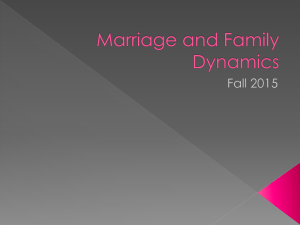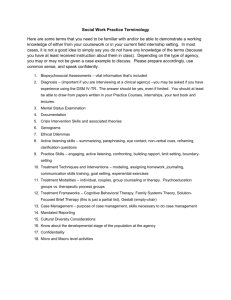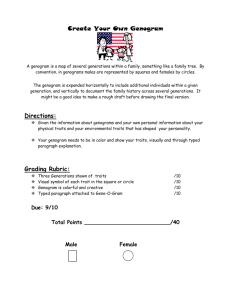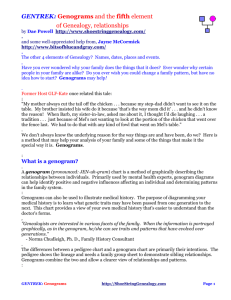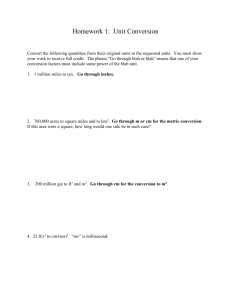Genograms
advertisement
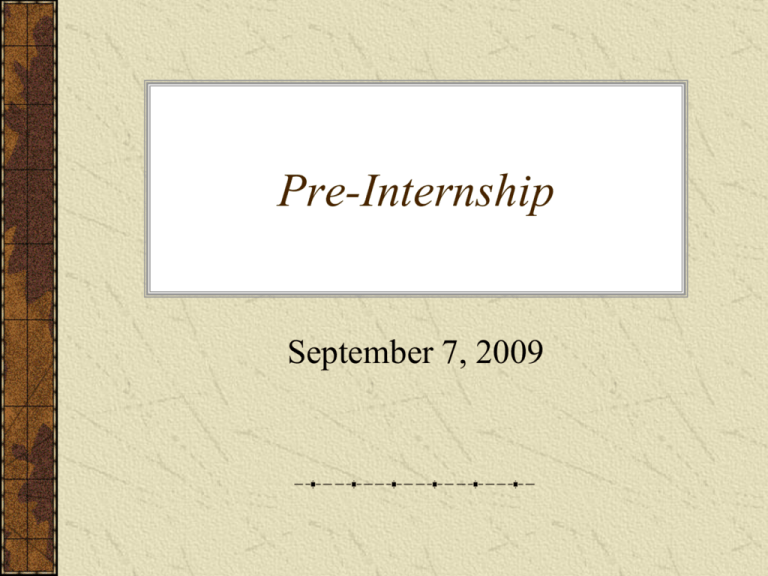
Pre-Internship September 7, 2009 Today’s Outline… Listening to the Feelings of Clients (1:00-1:30) Genogram construction (1:30-2:15) Break (2:15-2:30) Dyad demonstration (2:30-3:30) APA style review (3:30-3:50) Listening to the Feelings of Clients Genograms Genograms Definition = a format for drawing a family tree that records info about family members & their relationships over at least 3 generations; developed by Bowenian multigenerational therapists Genograms Why use genograms? – – – – – – – – – – – Tangible graphic representation of family Allow clinicians to map family structure Can be easily updated as new info emerges Easier to mind members, patterns, events Shows how relationships & events are related to patterns of health & illness Part of a thorough assessment Subjective interpretive tool Good joining tool Allows therapist to reframe, detoxify, normalize Allows for demonstration of systemic functioning Assesses previous life cycle transitions Genograms Three levels of creating a genogram – Mapping the family structure – Recording family information – Delineating family relationships Space considerations – 1st questions to ask – How many times was each person married? – How many siblings did each parent have & where were they in birth order? Genograms: Info Added Adjacent to Each Family Member Demographic – – – – Dates of birth & death Locations Occupations Educational level Functional – Emotional – Behavioral patterns – Medical problems Critical – – – – – – – – – – Important transitions Relationship shifts Migrations Losses & successes Marriages Separations Divorces Moves Job changes Traumatic events Genograms: Six Categories Family structure – Structural patterns – Roles & relationships in family Life cycle fit – Current life cycle changes family is going through Pattern repetition – Patterns in functioning, relationship, & family structure – Recognize to repeat or avoid repeating Life events & family functioning – How life events & changes in functioning are related – Anniversary reactions – Social, economic, political events Relational patterns & triangles – Close, fused, hostile, conflictual, distant, cut off Family balance & imbalance – Extreme contrasts b/t family members in terms of responsibility & power Potential Problems in Constructing Genograms (Kuehl, 1995) Intervening before clients understand potential usefulness Clients who do not connect FOO dynamics with current problems may find it a waste of time Asking to identify strengths in families may lead client to think therapist does not understand problem Therapist may interpret family dynamics & patterns before client is ready to acknowledge them Constructing genogram with only one side of family may distort therapist’s perception of the family Genogram Examples 2:15-2:30 BREAK DYAD ROLE PLAY APA Style Review General Writing Skills All papers should consist of… – Introduction – Body – Conclusion Grammar “pet peeves” – – – – – – Do not use contractions Do not end sentences in prepositions Do not write in 1st person – unless opinion paper or journal style Noun-pronoun agreement Use complete sentences – noun & verb Comma usage – always use commas in series of three or more and when writing a compound sentence General APA Formatting Double spacing Page numbering – upper right hand corner (start with 2 on the first page of text; don’t put pg. number on title page) Header – upper right hand corner to the left of page number (appears on every page except title page) Headings Most likely to use 3 levels of headings See pg. 113-115 of APA manual Narrative Theory in Marital Therapy Major Concepts Externalization of problem. In narrative therapy, externalization refers to the process of… Reference Page Type References at top of page List references in alphabetical order by last name of the 1st author Maintain double spacing on reference page Use “hanging” indent on references See pg. 207-214 of APA Style manual or look at syllabus for examples of references Citing References in Paper For direct quote: – Goff (2005) stated, “Blah, blah, blah” (p. 55). – “Blah, blah, blah” (Goff, 2005, p. 55). For paraphrased information: – According to Goff (2005), genograms are useful assessment tools. – Genograms are useful assessment tools (Goff, 2005). Citing References in Paper Multiple authors – First citation – list all authors • (Halstead, Blakeslee, & Goff, 2005) • According to Halstead, Blakeslee, and Goff (2005)… – Additional citations after first citation • (Halstead et al., 2005) • According to Halstead et al. (2005)… Two authors – always list both names Other Miscellaneous Items Never use bold type in APA style!!! Only use quotation marks when quoting a source. Block quotes – – – – More than 40 words Should be indented 5 spaces from left margin Don’t use too many of these See pg. 312 for example Helpful Pages in APA Manual Headings – pp. 113-115 Reference citations in text – pp. 207-214 Reference page – pp. 215-281 Example paper – pp. 306-320 For Next Week… Dyad #1 due Guidelines presentation – Kent, Tyson, & Blake Reading – Gilbert, 1-6 – Kerr & Bowen, 4
